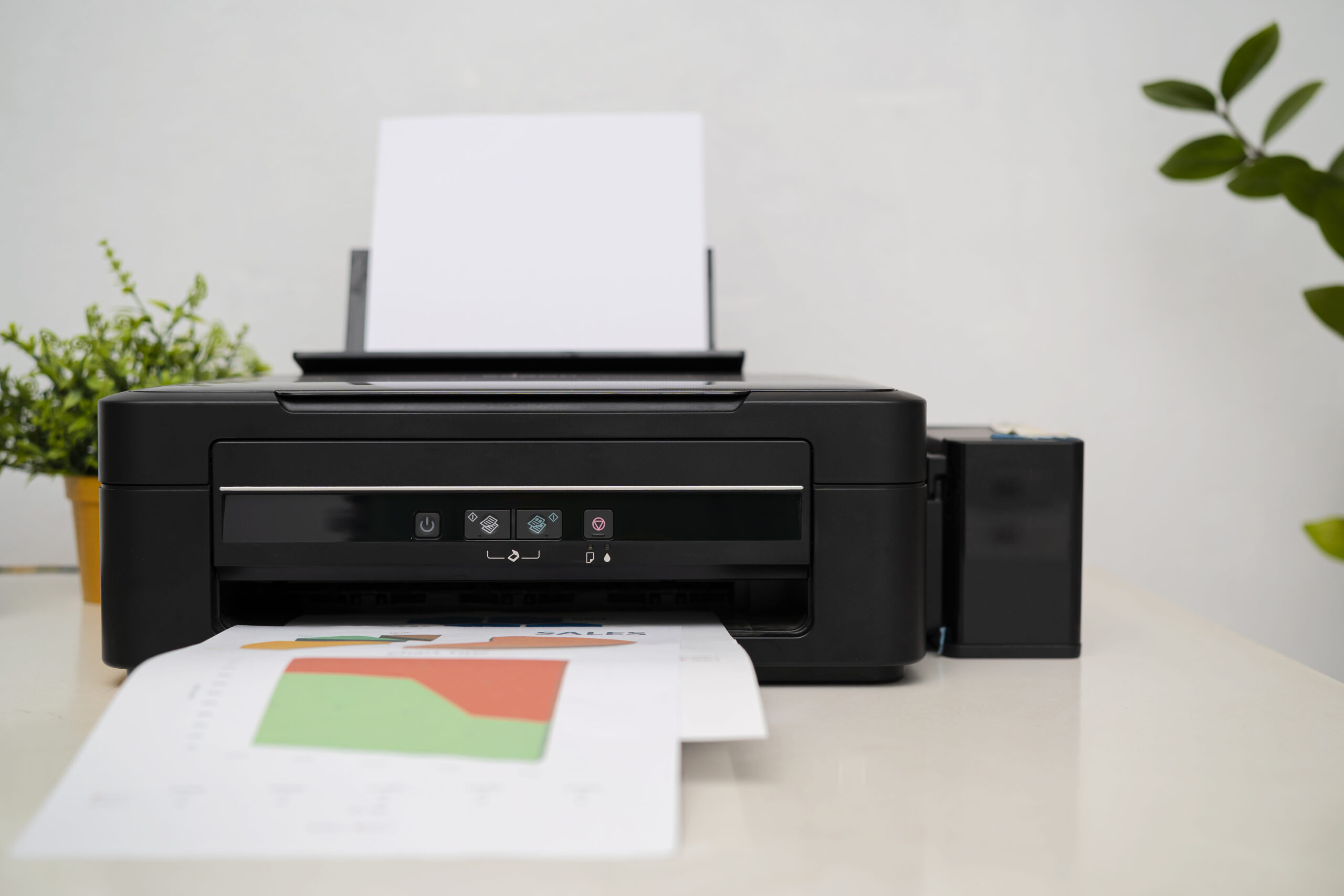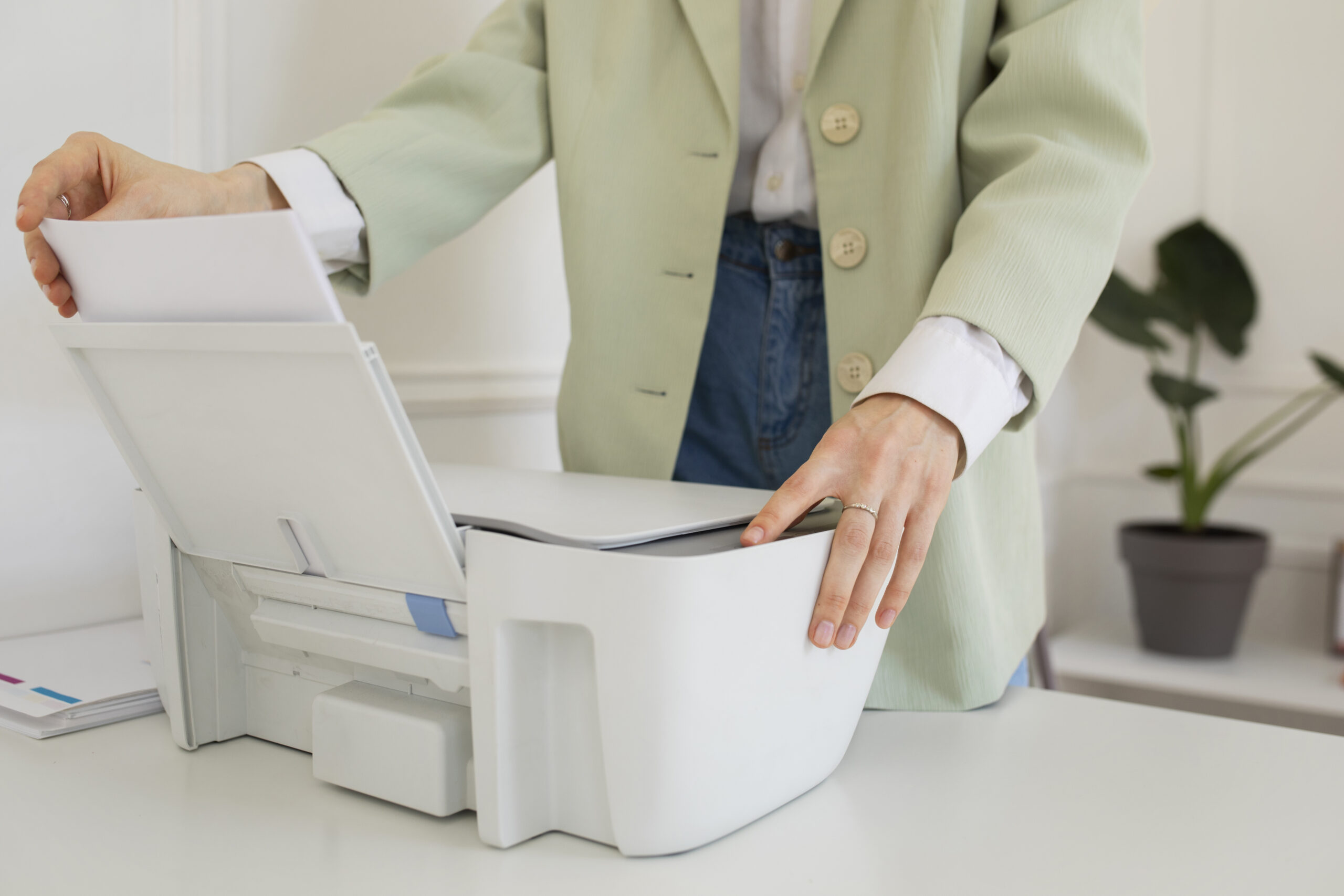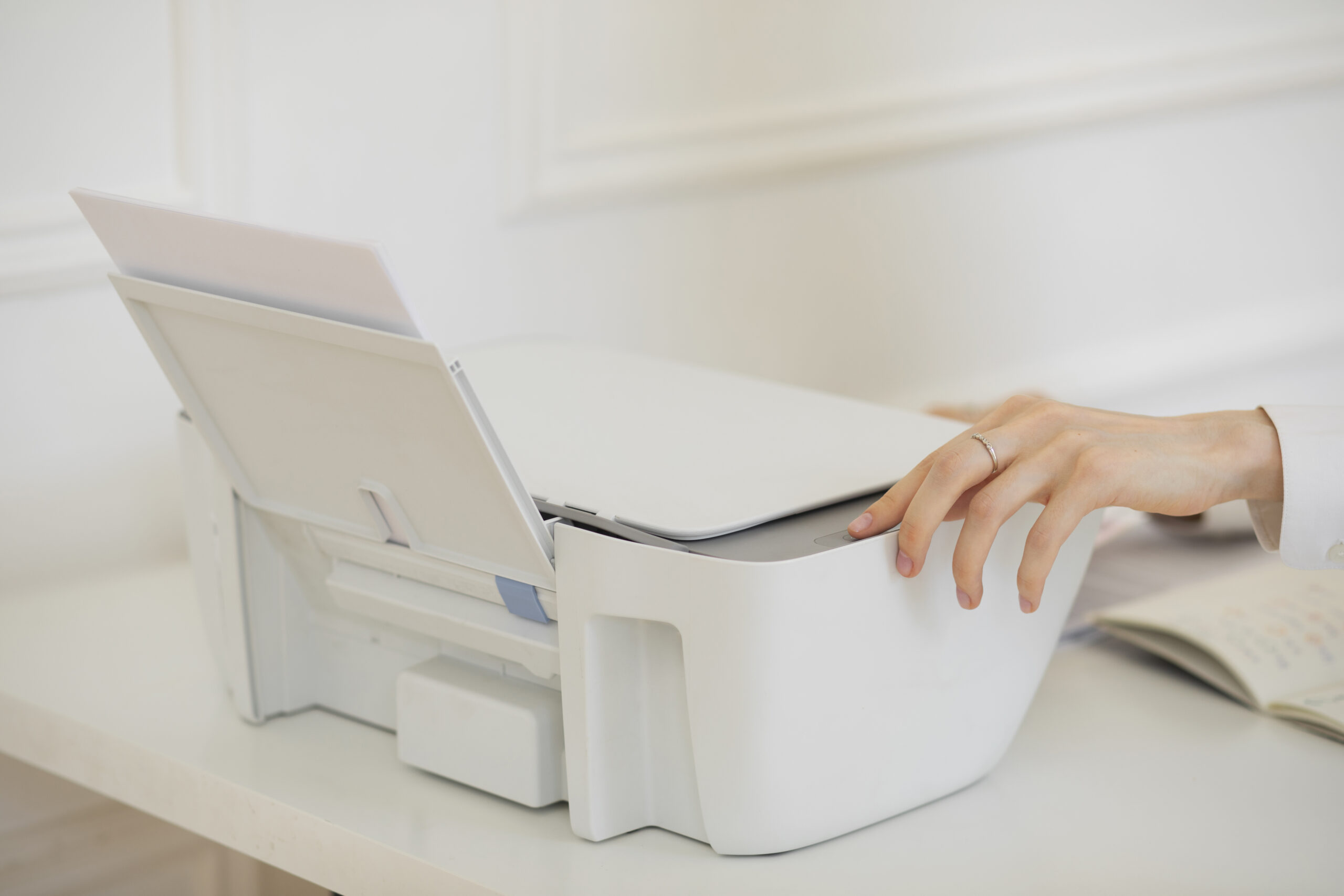Printer Says “Offline”? A Complete, Brand-Neutral Fix Guide for Windows & macOS

When a printer claims it is “offline”, it usually means the computer is pointing at the wrong place, the device lost its network details, or the print queue has stalled. Hardware failure is rare; most cases are simple mismatches between what the computer expects and where the printer actually is on your network. This guide explains, in plain UK English, the easy fixes that restore printing in minutes. You will learn how to clear stuck jobs without losing work, how to remove and re-add cleanly on Windows and macOS, how to give the printer a stable address so it does not vanish after router restarts, and how to tame mesh systems, firewalls, and security tools that sometimes get in the way. Each method is brand-neutral and safe for home or small office use.
Why printers show “offline” (common causes explained)
Offline status is a symptom rather than a diagnosis. It happens when the computer cannot reach the target it thinks is your printer. If your router rebooted overnight and gave the printer a fresh address, your old queue will keep trying to talk to the previous one. If you changed the Wi-Fi password but never updated the printer’s profile, it will sit quietly, waiting for credentials that no longer work. If a large job failed and jammed the queue, new jobs never start and the operating system reports a generic offline state. Modern networks add a few twists: merged SSIDs where 2.4 and 5 GHz share a name, mesh nodes that steer devices mid-print, and guest networks that block device-to-device traffic. Once you map the cause to a category — addressing, credentials, queue, or policy — the fix is straightforward.
| Category | What changed | What you see | Quick fix |
|---|---|---|---|
| Addressing | Router reboot; new DHCP address | “Offline”; prints from phone but not laptop | Reserve static IP; re-add queue by IP |
| Credentials | New SSID/password; band disabled | Printer not on Wi-Fi at all | Rejoin Wi-Fi; enable 2.4 GHz |
| Queue | Stuck/corrupt job | Jobs pile up; nothing moves | Clear spooler; restart service |
| Policy | Firewall/guest network | Device visible but cannot print | Allow local protocols; use staff SSID |
Method 1 — Power cycle the right way (modem → router → printer → computer)
Power cycling is effective when it respects the order in which devices rely on each other. Your computer cannot talk to a printer until the router’s addressing service is live, and the printer cannot register itself until the wireless network is ready. If you bring devices up out of order, they can time out and cache a broken state.
- Turn everything off: printer, computer, router, and modem if separate.
- Start the modem and give it a full minute to sync.
- Start the router and wait another minute so Wi-Fi and DHCP are active.
- Start the printer, then your computer or phone.
- Print a network report from the printer menu and note its IP address.
- Send a 1-page test from two devices (e.g., phone and laptop).
Method 2 — Clear the print queue & spooler properly
A corrupt or oversized job can block the queue and trigger an offline state even when the network is fine. Clearing the queue resets the pipeline so new jobs can reach the printer.
Windows
- Open Settings → Bluetooth & devices → Printers & scanners → select your printer → Open print queue → Cancel all.
- If items will not clear, press Win + R, type
services.msc, stop Print Spooler. - Open
C:\Windows\System32\spool\PRINTERSand delete the files inside (admin rights needed). - Start the Print Spooler service again and try a 1-page test.
macOS
- Go to System Settings → Printers & Scanners → select your printer → Open Print Queue → Delete each stuck job.
- If the queue appears locked, remove the printer (minus icon), then add it again (plus icon), choosing the same model or IP tab.

Method 3 — Remove & re-add the printer cleanly (Windows & macOS)
Re-adding the printer forces the operating system to forget stale addresses and drivers. It is fast and solves many “offline” cases without deeper work.
Windows 10/11
- Settings → Bluetooth & devices → Printers & scanners → choose the device → Remove.
- Click Add device and pick the discovered printer, or choose The printer that I want isn’t listed → add by IP address (recommended after Method 4).
- Send a test page; if discovery fails, use the IP method.
macOS
- System Settings → Printers & Scanners → select the device → Remove.
- Press + and add from the list, or open the IP tab and enter the static IP/hostname.
Method 4 — Reserve a static IP (DHCP reservation) so the queue never “loses” the printer
Dynamic addresses are convenient for phones and tablets, but they are unhelpful for shared printers. If the address changes, the queue tries to reach yesterday’s location and reports “offline”. A DHCP reservation binds the printer’s MAC address to a fixed IP so it remains in the same place across reboots.
- Print a Network Configuration page from the printer to find its MAC address and current IP.
- In your router, open the DHCP or LAN section and choose Address Reservation (wording varies).
- Add the printer’s MAC and assign a free IP in your normal range (for example, 192.168.1.50).
- Restart the printer and confirm it now shows the reserved IP.
- Remove and re-add the queue on each computer using that IP (see Method 3).
| Symptom | Clue | Fix |
|---|---|---|
| Works today, offline tomorrow | Printer IP is different each day | Reserve static IP; re-add by IP |
| Phone prints, laptop does not | Laptop queue targets old IP | Delete and add queue again |
Method 5 — Add the printer by IP or hostname instead of discovery
Discovery methods (Bonjour/AirPrint on macOS, WS-Discovery on Windows) depend on broadcast traffic that guest networks or strict firewalls may block. Adding the printer directly by its IP or hostname bypasses that uncertainty and points your queue at the stable target created in Method 4.
Windows
- Settings → Bluetooth & devices → Printers & scanners → Add device → choose “The printer that I want isn’t listed”.
- Select Add a printer using a TCP/IP address or hostname and enter the static IP.
- When asked for a driver, accept the suggested model or a class driver (IPP/Generic PCL) if you only need basic features.
macOS
- System Settings → Printers & Scanners → + → go to the IP tab.
- Enter the static IP or hostname, choose the correct protocol (usually IPP), and select the appropriate driver from the list.

Method 6 — Use the right Wi-Fi band (prefer 2.4 GHz for stability)
Many home printers connect more reliably to 2.4 GHz because it reaches further and penetrates walls better than 5 GHz. Some models cannot use 5 GHz at all. If your router merges both bands under one SSID, a printer may attempt 5 GHz, lose range, and appear offline from upstairs or the next room.
- Enable 2.4 GHz: In your router, ensure 2.4 GHz is on. If you previously hid or disabled it, re-enable it.
- Split SSIDs temporarily: Give 2.4 and 5 GHz different names (e.g., Home-2G and Home-5G) during setup.
- Join the printer to 2.4 GHz using its panel or app. Enter the password carefully (watch 0/O and l/1).
- Test from two devices and confirm strong signal on the printer’s network report.
Method 7 — Adjust firewall and antivirus rules (allow local printing)
Security software and strict router settings can block discovery or print protocols, causing an offline state even though both the computer and printer are online. The aim is to allow trusted local traffic without weakening your overall protection.
- Windows: Ensure the network is marked as Private (Settings → Network & Internet), then allow print services in Windows Defender Firewall. If third-party antivirus includes a firewall, add the printer’s IP as trusted and allow local subnet traffic.
- macOS: In System Settings → Network, confirm you are on the main SSID, not a guest. In Privacy & Security → Firewall, allow incoming connections for the printing system and any vendor utility.
- Router: Avoid “client isolation” on the SSID used for printers. Guest networks often block device-to-device traffic by design.
| Blocker | Symptom | Allow |
|---|---|---|
| Client isolation / guest SSID | Printer visible on phone but not laptop | Use staff/main SSID; disable isolation |
| Third-party firewall | Cannot add by discovery | Add printer IP as trusted; allow local subnet |
| VPN always on | Queue stalls when VPN connects | Exclude printer IP from VPN or pause during print |

Method 8 — Update or refresh drivers and device firmware
Operating system updates can outpace older print drivers. A quick refresh often restores features and resolves “offline” glitches. Firmware updates improve network compatibility and reliability on modern routers and mesh systems.
- Windows: After removing the device, reinstall using Windows Update’s suggested driver or the manufacturer’s latest package. If you only need basic printing, the built-in IPP Class or generic PCL/PS driver is stable and light.
- macOS: Remove the device, then add it back choosing AirPrint/IPP where available. For advanced finishing, use the vendor’s profile if provided for your OS version.
- Firmware: From the printer’s panel or admin page, check for updates and apply them while the device is idle.
Method 9 — Mesh systems, extenders, and multi-router homes
Mesh makes coverage easy but can move devices between nodes mid-job. Extenders may create double NAT or weak return paths. Multi-router households sometimes run the second router in full router mode, splitting the network into islands. All three can make a perfectly healthy printer appear offline from certain rooms.
- Pin or prefer a node: Some mesh systems let you prefer a node for a device by MAC address. Use this for the printer.
- Bridge mode: If you have two routers, set the secondary to Access Point/Bridge mode to keep one logical network.
- Avoid extenders for printers: Connect the printer to the main router or nearest mesh node rather than a repeater.
- Static IP: Still reserve a static IP in the primary router; it simplifies everything else.

Method 10 — Use a USB/direct connection as a bridge when Wi-Fi is unstable
When you must print now, a cable bypasses radio issues and gets the job done. A brief USB session also lets you access the printer’s admin page to set a static IP and Wi-Fi credentials cleanly before returning to wireless.
- Connect via USB to your computer and add the printer as a USB device.
- Open the admin page (from the driver utility or printed report) and configure Wi-Fi SSID/password plus a static IP.
- Disconnect USB, then add the printer again by its new IP as a network device.
Prevention habits that keep printers online
- Static IP for every shared printer. Re-add queues by IP, not just discovery.
- Weekly one-page test. Wakes queues and surfaces issues before a deadline.
- Quarterly firmware update. Improves compatibility with current routers.
- Document the setup. Note SSID, password, static IP, and driver used; keep it near the device.
- Strong signal, sensible placement. Avoid cupboards, metal racks, and far corners of the house.
- Avoid guest networks. Use the main/staff SSID; disable client isolation for printer subnets.

Troubleshooting matrix (find your symptom, follow the fix)
| Symptom | Likely cause | Do this first | If still bad |
|---|---|---|---|
| “Offline” after router reboot | New DHCP address | Method 4: Reserve static IP | Method 5: Add by IP/hostname |
| Only phone can print | Laptop queue targets old IP | Method 3: Remove & re-add | Method 7: Check firewall/VPN |
| Printer not seen at all | 2.4 GHz disabled or hidden | Method 6: Enable/split SSIDs | Method 9: Pin a mesh node |
| Jobs stuck “spooling” | Corrupt job in queue | Method 2: Clear spooler | Method 8: Refresh driver |
| Works via USB, not Wi-Fi | Guest/isolated network | Use main SSID | Allow local protocols; add by IP |
| Drops mid-print upstairs | Weak 5 GHz signal | Method 6: Force 2.4 GHz | Relocate or add mesh node |

Appendix — Quick reference steps (Windows & macOS)
| Windows 10/11 | macOS |
|---|---|
|
|

FAQs
Why does my printer go offline every Monday morning?
Many routers reboot on a schedule, handing out fresh addresses. Reserve a static IP for the printer and re-add the queue by that IP so the target never changes.
Is it safer to keep colour disabled while I fix offline issues?
Colour settings do not affect connectivity. Focus on address stability (static IP), queue health, and the correct Wi-Fi band. Re-enable any preferences once printing is stable.
Should I reset the printer to factory settings?
Only if other steps fail. A full reset clears useful presets and counters. Try power cycling, queue clearing, static IP, and re-adding by IP before a factory reset.
Can VPNs cause offline errors?
Yes. Some VPNs tunnel all traffic and block local discovery. Exclude the printer’s IP from the VPN or pause the VPN while printing on the local network.
What if the printer shows full Wi-Fi bars but still says offline?
Signal strength is only one factor. If the IP changed, the queue may still point to the old address. Reserve a static IP and re-add the printer by that address.
Is Ethernet better than Wi-Fi for reliability?
Yes. A cable avoids radio congestion and band issues. If the printer is near the router, Ethernet plus a static IP delivers rock-solid availability.
Guide Axis provides brand-neutral education only. No remote access, repairs, or warranty services.
